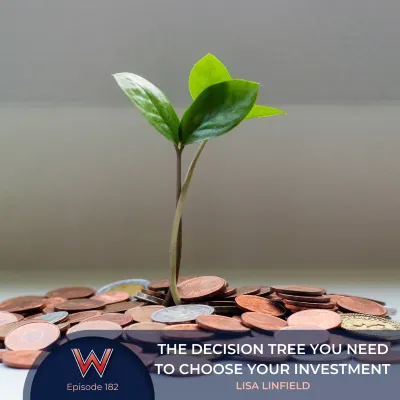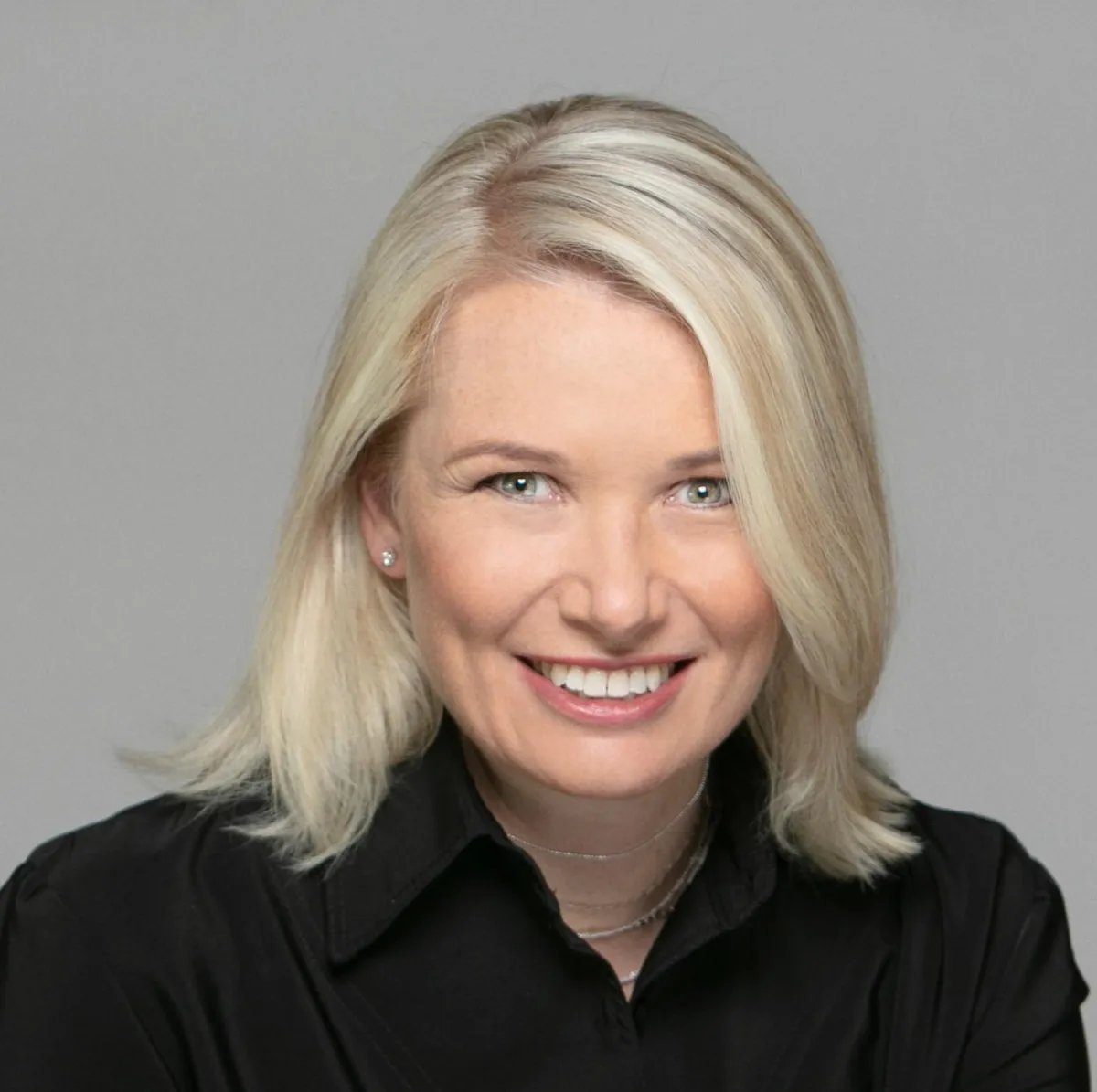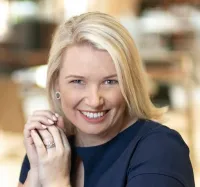Browse for the latest episode of...
working women's wealth

182 The decision tree you need to choose your investment
With so many options available, how do you choose your investments?
There is a decision tree that all investors go through, some of them subconsciously, that helps them to choose which fund they need to invest in. Over the last few episodes we’ve looked at how you invest, and in today’s episode (taking into account the foundations of investing) we’re going to bring it all together in a step-by-step decision tree to help you choose your investments to suit YOU!
With two very different case studies to help you see how to use it, I hope you’ll listen to it again and again with the downloaded picture (available below) until it becomes second nature.
Show Notes
[02.41] Step 1: You
[04.54] Step 2: The Investments
[06.41] Step 3: The Decision Tree of Investing
[15.59] Putting it all together
Case study One … Mary
Case Study Two… Tiffany
Related posts and episodes
How much is enough?
Investing Tax free!
Optimising tax on your investments
The decision tree you need to choose your investment
The four foundations of investing
Four things you need to know about your home(financially)
Why you should invest offshore
Why your home is NOT an investment
Subscribe to our podcast on iTunes or Spotify
Please do Subscribe to our Podcast on iTunes or Spotify and leave a review. This helps the podcast to rank higher and therefore makes it more visible to others browsing podcasts in the hope they too may benefit from our content.
Get my book - Deep Grooves: Overcoming Patterns that Keep you Stuck
You can get the first two chapters of my book FREE here
If you want a paperback copy and you’re in South Africa, visit my site LisaLinfield.com
If you want a Kindle copy or a paperback anywhere in the world, visit Amazon
Quotes
“If you’re going to not resist spending that money, then you’ve got to put it in investments you can’t touch, or are difficult to access with lots of hurdles that make it harder for you to cash it in.” - Lisa Linfield
“You need to make sure that your investment can grow at least the same as inflation.” - Lisa Linfield
“Even the biggest investing opportunity, which is if you live in America and invest in America, American shares only have 50% of the world's listed shares in them.” - Lisa Linfield
Script:
182 – The Step-by-Step decision tree you need to choose your investment
With so many options available, how do you choose your investments?
There is a decision tree that all investors go through, some of them subconsciously, that helps them to choose which fund they need to invest in. Over the last few episodes we’ve looked at how you invest, and in today’s episode (taking into account the foundations of investing) we’re going to bring it all together in a step-by-step decision tree to help you choose your investments to suit YOU!
With two very different case studies to help you see how to use it, I hope you’ll listen to it again and again with the downloaded picture (available in the show notes via the episode link below) until it becomes second nature.
Step 1: You
Episode 180, 181, 179, 173
Step 2: The Investments
Step 3: The Decision Tree of Investing
Putting it all together
Quotes
“If you’re going to not resist spending that money, then you’ve got to put it in investments you can’t touch, or are difficult to access with lots of hurdles that make it harder for you to cash it in.” - Lisa Linfield
“You need to make sure that your investment can grow at least the same as inflation.” - Lisa Linfield
“Even the biggest investing opportunity, which is if you live in America and invest in America, American shares only have 50% of the world's listed shares in them.” - Lisa Linfield
Decision 2: What type of asset do you want to invest in, and how much of each?
In the last episode, 181, we discussed the different types of investments, or assets as they’re known. How much of each asset you put into your total investment is called your asset allocation
Least Risky: Income assets such as savings, money market, bonds or income funds
Most Risky: Are complex or high risk speculative investments such as bitcoin, futures, your friend’s business. For the rest of this episode, we’re going to assume that the most risk you take is listed shares on the stock exchange… and consider complex investments.
Now most people don’t put all in one asset type. In general, cautious people will have a maximum of 40% allocated to shares or property, and 60% to income funds. A 20 year old who has 40 years to invest may have all their money in shares if they’re able to invest it and leave it over the 40 years.
Decision 3: Investment concentration
Most Risky: One single share
Least Risky: Diversified, low risk multi-asset Fund
The great news is that as I mentioned in Episode 179 is that Funds reduce the risk of a single share, and that you can also get funds that are cautious, balanced or aggressive. But make sure you look inside and see how much of each type of asset is in the fund because I’ve seen Balanced funds with 40% equities, and balanced funds with 75% equities.
Decision 4: Management Style
This follows on from the fund approach – whether you have an actively managed fund or a passively managed fund.
I personally am not an either one or the other person. It depends on the phase of the market and depends on the location of the investment. Some locations, like emerging markets, may be better to have Actively managed funds, whereas global shares are better as trackers or passive funds.
The only time I ever have a total absolute is on long term income funds. I always use active funds here – but they are in general a cheaper asset class than shares.
Decision 5: Where is your money physically located
Now this is a very difficult one to say what’s high risk or low risk.
In general, if you’re in a developed, stable market, with little political risk, you will more than likely keep your money in your country physically, as you can invest in almost all places in the world from there, and it’s much easier when you die for your family to sort it out.
However, in high risk countries you may choose to keep your money offshore in a tax neutral country.
My recommendation here is never usually one or the other. Different locations lower your risk, but may increase your cost and complexity. It totally depends on my clients and their view of risk.
Decision 6: The Tax Wrapper
The last decision you should make is what tax-wrapper you put it in – although, sometimes this comes into play earlier. So let me revise what this is.
Here’s the thing. The government want you to invest for retirement, because if you don’t, they need to pay for your health care and your old age home and your other needs. So the more people that have their own money and don’t need government services, the better. So they give you tax incentives to save for the long term
The rules governing the tax incentives, the maximum or minimum amounts you can put in it, the timing of getting access to it – all these rules wrap around your account and restrict how it works. That’s why we call them a wrapper.
In episode 173, we discussed the first place you should put your money when you start investing - the Tax Free investment options in your country. The money goes in after tax, but doesn’t get taxed after that. That money is long term money, that you should try “forget about”.
The next big tax savings are Retirement accounts -again, there are different types of accounts and different rules in each country, but in general, the government allows you to put money in it before tax… it can grow free of tax… but when you take it out you will get taxed.
Then, there are hybrid options, including Endowments or life insurance wrapped structures.
Lastly, you can invest with no rules, or directly invest. This means you can invest how much, how often and take it out whenever you want. And, you’re then subject to normal tax rules of dividend tax or interest tax on the yearly income or capital gains tax on the growth when you sell.
We’ll discuss more on this next week – and if you want to read up more, I wrote two blog articles on it – the links are in the show notes and available on workingwomenswealth.com
Putting it all together
So, let’s put it all together… and I’m going to give you two examples here.
Case study One … Mary
FOUNDATION - You
● Let’s say Mary is 45 years old, has an average or moderate tolerance for risk, and is behind on her saving (although she does have some) despite earning a good salary
● Her need is to save for retirement – so you have at least a 20 Year horizon
● Most of her money is in South Africa physically, and very little is invested overseas. She loves South Africa, but thinks that she may spend some time in the future overseas.
● She has been known to access your investments for holidays instead of leaving them for retirement.
FOUNDATION – Investment
● The time horizon of 20 years immediately tells me that we can’t be 100% in investments that don’t earn above inflation… and that shares are in the safer zone because of the long time.
● The fact that Mary’s short on her retirement target means she needs to earn above inflation so that not only can it keep its buying power, we need it to grow more to close the gap.
INVESTMENT LOCATION
● The fact that most of Mary’s money is invested in South Africa is a risk. South Africa is less than half of the world’s share portfolio, so there is concentration risk
● South Africa is also a Developing market, so I would put money offshore
ASSET ALLOCATION, INVESTMENT CONCENTRATON and MANAGEMENT STYLE
● She has moderate risk, so would need 40-60% of her money in equities and 40%-60% of her money in an income
● As I said in Episode 179, I personally never invest in a single share or bond. I invest in Funds. And there are very few people who can do their homework on the universe of shares in the entire developed world to pick that one.
● So, I’d invest in funds – and for the income fund I’d choose an active fund, but for the equities portion I’d choose the world tracker for developed markets for my fictitious character Mary.
MONEY LOCATION
● I’d invest her money physically offshore, as she has no money offshore and may, at some stage want to live overseas.
TAX RULES WRAPPER
● I’d also put Mary in a South African Compliant Endowment overseas. It has a 5 year restriction period, has tax savings on CGT and Interest Income tax.
● Most of all, it is much easier for your estate if you die whilst living in South Africa.
Case Study Two… Tiffany
FOUNDATION - You
● Tiffany is 25 years old, and lives in the USA
● She has a high tolerance for risk, and is maxing her contributions to her 401(k) or employment pension contribution and her employer is matching her contributions of $2,000
● She has another $6,000 to invest.
● Her need is to save for retirement – so she has at least a 40 Year horizon
● Her money is in the US, her existing funds are in the US and she plans to live and retire there.
● She is a disciplined investor and hardly spends that much. Her dad went bankrupt, so she’s terrified of being left with nothing, and has a cautious approach to money.
FOUNDATION – Investment
● The time horizon of 40 years and her age immediately tells me that we could be 100% in high risk assets – but her fear of money and cautious approach means that we would never do this as she would not be able to tolerate the bouncy nature of the share price of an all share portfolio.
INVESTMENT LOCATION
● The fact that Tiffany is in America and doesn’t plan to leave, and it is a Developed country means that we may want to introduce some developing market investments into her portfolio. However, there is also the opportunity to put some other developed markets into her portfolio such as the UK and Europe.
ASSET ALLOCATION, INVESTMENT CONCENTRATON and MANAGEMENT STYLE
● She has a cautious risk profile, so should have a maximum of 40% of her money in equities and 60% of her money in income assets. But given her young age, I would encourage her to increase her exposure to equities.
● I’d invest in funds – but this is where the Tax wrapper would modify my recommendation, so I’ll get to that later
MONEY LOCATION
● I’d invest her money in the US.
TAX RULES WRAPPER
● As her retirement fund has a company match to it, that would stay as it is.
● The next investment would be her tax free Roth IRA. But as she’s contributing $2,000 to her 401k company retirement fund, she can only contribute $4,000 to her Roth IRA
o So for this one, having seen the allocation of her 401k investments, I would give her two options
▪ A Passive, Target date retirement fund – which will take on higher risk now that she’s younger, and then shift it into lower risk towards retirement
▪ Or, I’d offer her the a Moderate or Conservative growth passive fund, such as the Vanguard Life Strategy Moderate Growth fund (or another similar), that has low costs, but has a mix of US and international stocks, as well as local and international Bonds
● For the remaining $2,000, I’d invest her offshore, with a 50:50 split of an active income fund and a passive emerging markets index fund
Now friends, I know this was a heavy podcast episode! But, I hope you’ll listen to it again and again with the downloaded picture until this stuff becomes second nature, and go back and listen to the supporting episodes so it can help you get to grips with it all.
Take care everyone!

Explore
On Social
YourBrand.com - All Rights Reserved - Terms & Conditions

